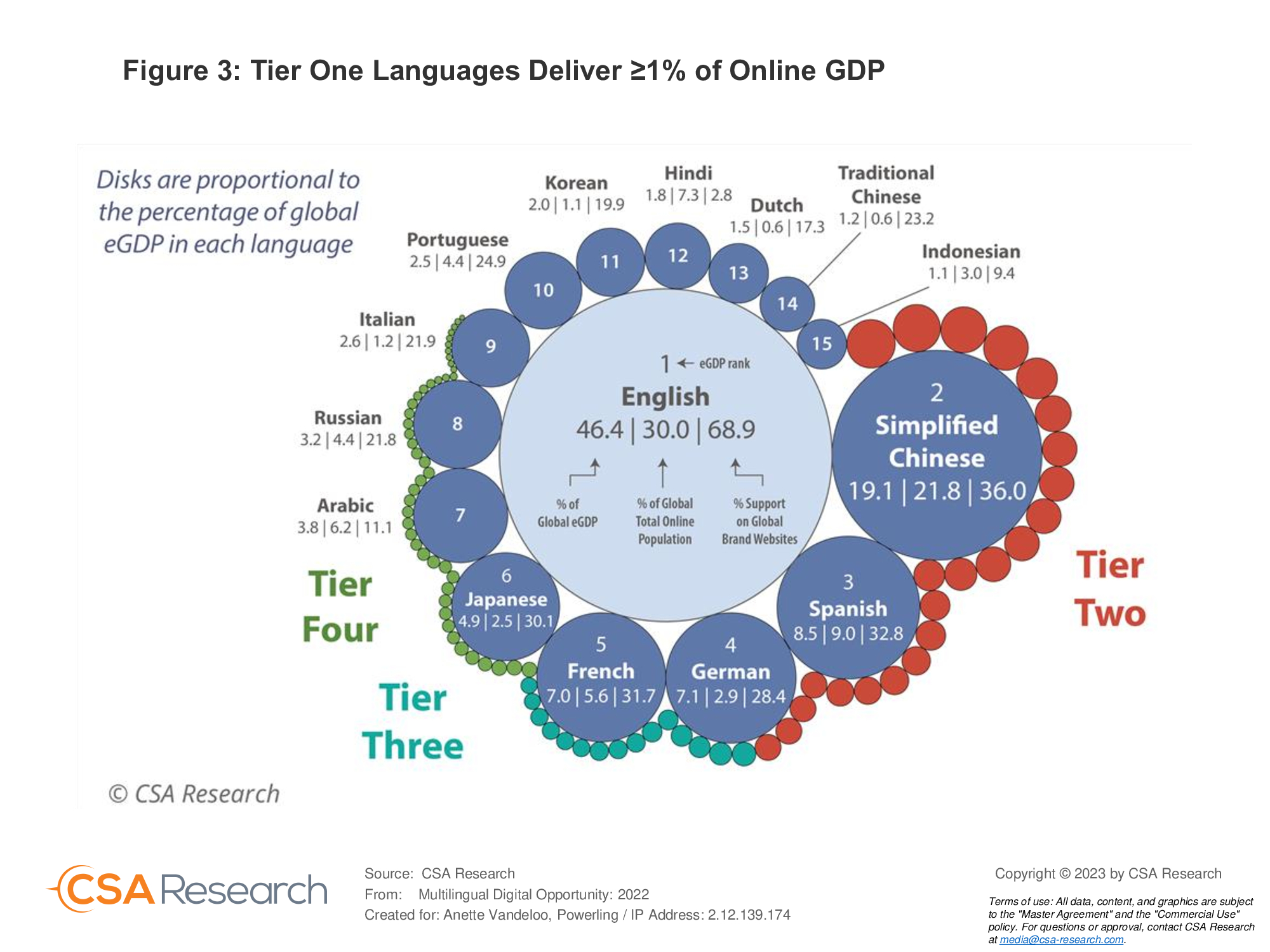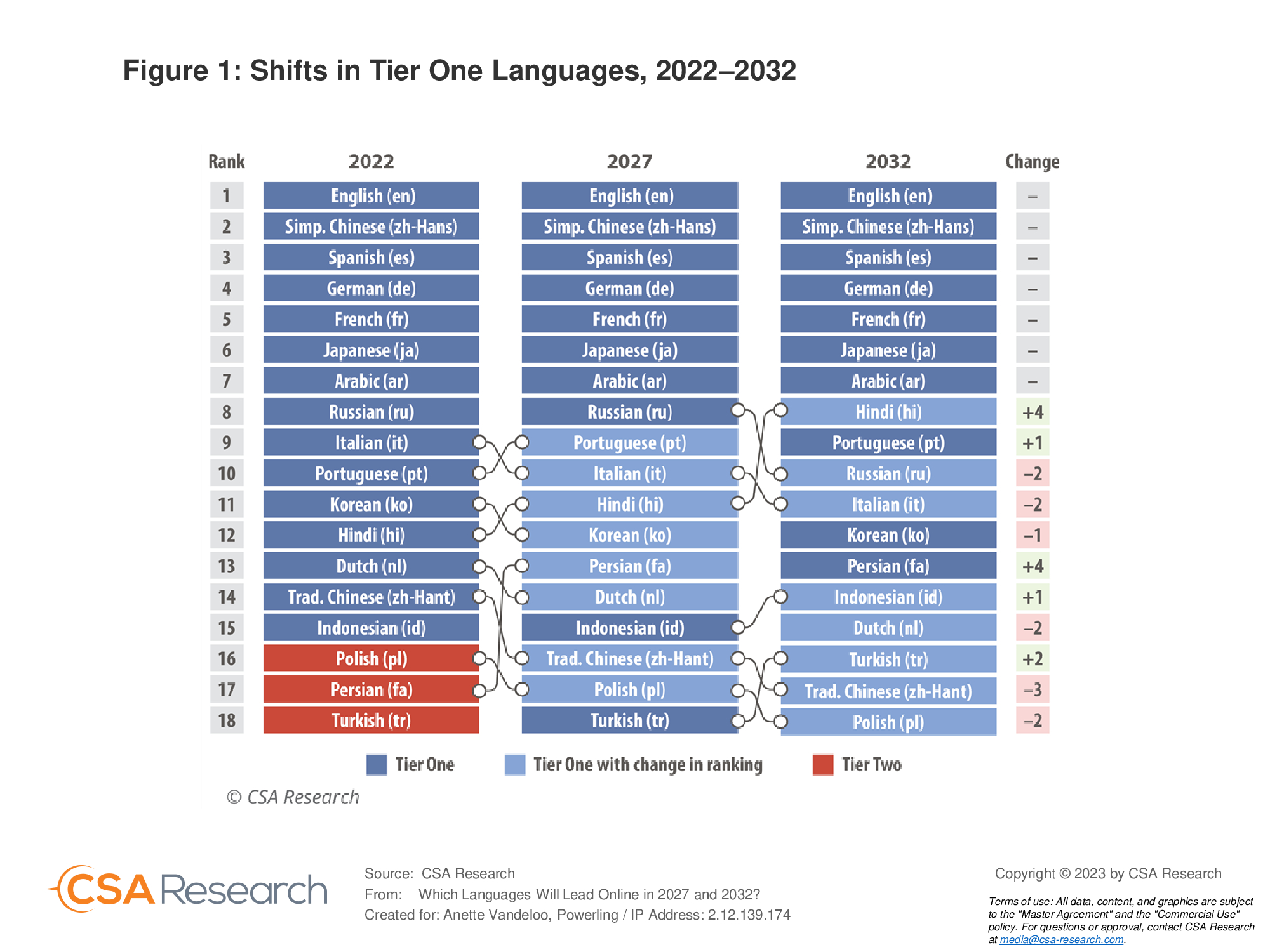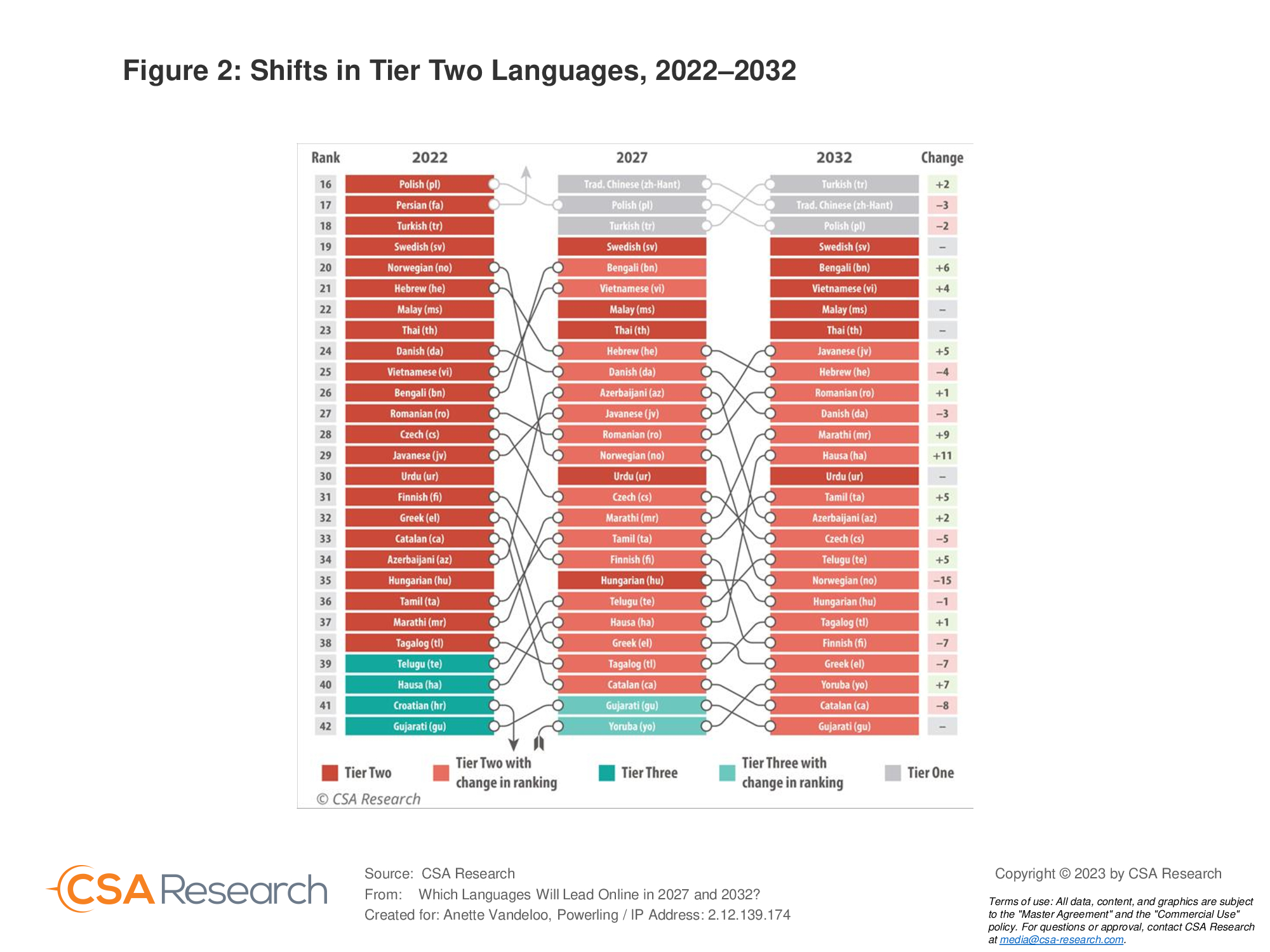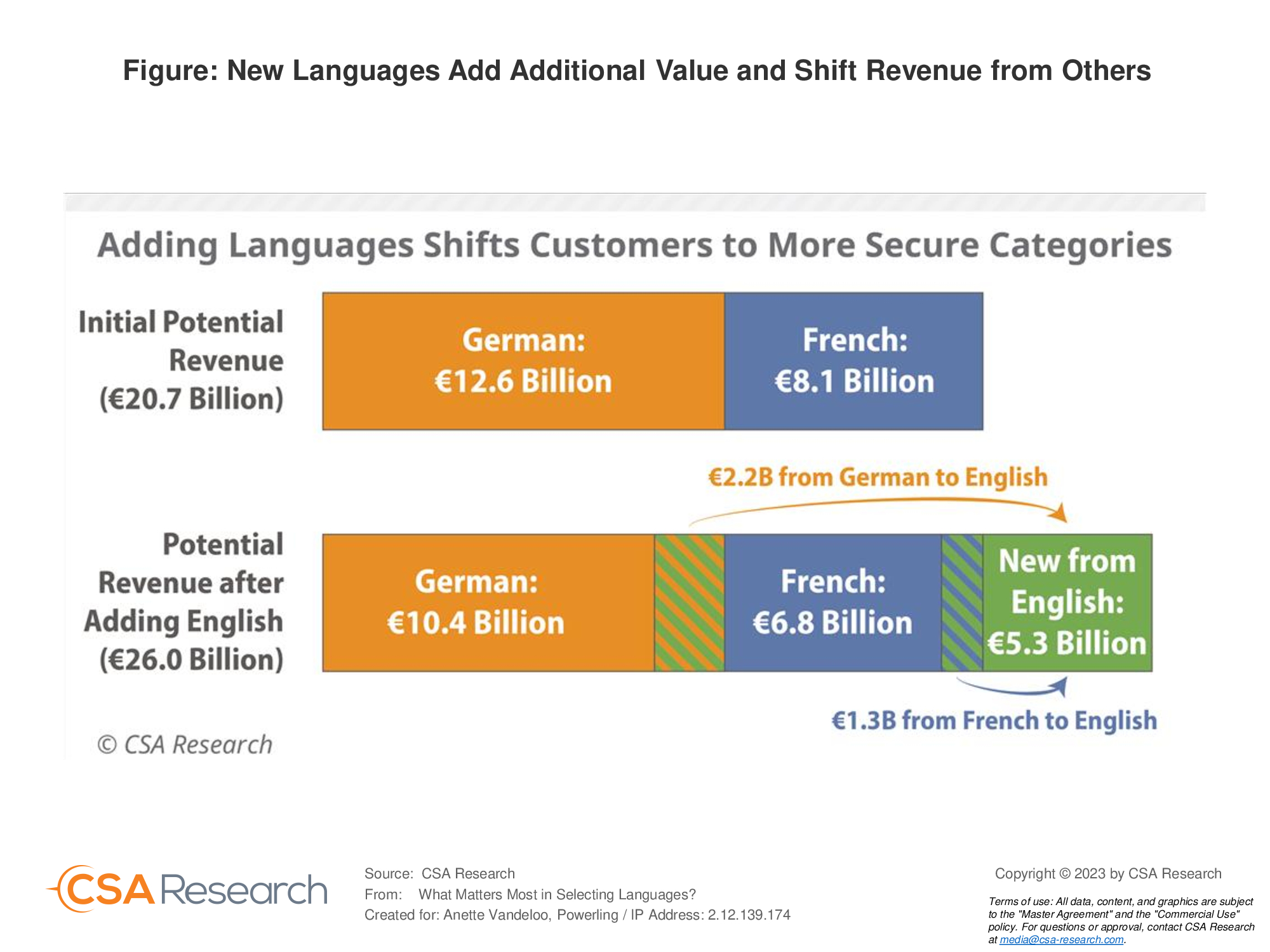What's the best way to go international with your product or service? By translating and localizing, of course! But what languages should you choose? What factors should you consider? Here's a quick guide to help you make the best decision for your business.
How do I decide which languages to localize my website/app/text/channel into?
You might imagine you could get by with using just one language, especially if your website is in English. After all, English is the second-most spoken language in the world, and the most widely used language on the internet, and a common choice for people learning a second language. Despite the fact that English predominates online, research indicates that 73% of the worldwide market prefers to interact with websites that are in their local tongue. You can check out our article, buy in your own language to learn more about it.
Things to consider
- English is no1 priority. In most case, if your service or app is not translated into English, it should be the first priority.
- Country relevancy. Focusing on a single country and language makes sense if you are, for example, developing a food delivery app that only serves cities in that local area. Launching in more languages, depending on if your budget allows it, make sense if your app isn't linked to any particular nation or market.
- Learn and know your market.
If your service, app, website, marketing channels, already exist, then you can use existing data of where people currently use your service and localize directly in these languages.
You need to know where your potential customers are located and what their preferences are in order to select your target language and message when it comes to marketing your goods and services to new audiences.
Web analytics solutions, like Google Analytics, can provide information about the geographic distribution of your visitors as well as the degrees of involvement they have with the various sections and pages of your website. For example, If you are a German company, with a website in English, and notice many customers from France, it can be wise to translate into French to grow these sales, which will also bring traffic from French-speaking countries.
- Test potential markets.
By translating metadata, and not the main service, you can already test potential markets. On an e-commerce store, it is probably smart to just localize certain products first, or even only description and titles and see how it impacts traffic.
Choose sensibly, research exist on which languages have potential:
Understanding which languages will lead in the future in addition to which ones currently offer the best opportunities will be important if you want to develop a successful global language strategy. Some online languages are experiencing hyper-growth phases. Almost all languages are anticipated to experience an increase in their online gross domestic product (eGDP) during the next decade, but some will do so more rapidly than others.
Here is a full report of eGDP per countries.

Tier One languages:
Tier One languages are those that control at least 1% of the online eGDP globally. In 2022, 15 languages met this requirement. Polish will probably eventually pass that threshold, along with Persian and Turkish, according to Common sense advisory’s future predictions.
Internet connectivity is easily available, and populations speaking these 15 languages have high buying power. Tier One languages feature strong linguistic support in popular content authoring tools and browsers. Although some of them, including Arabic, Chinese, and Japanese, were once regarded as “difficult,” most computing environments can now readily handle them.

Your attention may be on European languages right now, but in the coming ten years, Asian languages will have the greatest prospects for growth, followed by an African wave that is just beginning to be seen. Tier One language usage is expected to significantly increase. The expected eGDP increase for simplified Chinese, Hindi, and Indonesian is greater than 100%.
Tier two languages:
Languages in Tier Two control at least 0.25% of the world's eGDP, but they fall short of Tier One. Within the next ten years, this group will undergo significant changes.
Despite having less economic potential, several of these languages are either regionally significant (such as Polish) or are expanding quickly (such as some languages of South Asia).

For all the Tier Two languages, we project absolute eGDP growth. Relative share, though, is another matter. The most notable example is Norway, which will increase its eGDP by 15% but will drop 15 places in the rankings as a result of slow population and income growth as well as high internet penetration levels that prevent further progress. The trajectory of the economy could, however, be more upward if it performs better than expected.
The languages Hausa (+11 spots), Marathi (+9 spots), Yoruba (+7 spots), Bengali (+6 spots), Javanese, Tamil, and Telugu (+5 positions) are among Tier Two's top gainers. Today's websites and apps pay little attention to these languages. Although their growth will compel brands to take them into account, their access to higher-end brands will be restricted by low per capita income.
It's possible that macroeconomic, political, and societal factors will have an impact on how effectively the predictions in these studies will be.
Maximize incremental revenue
Instead of only considering a language's entire worth, concentrate on the new revenue it will generate (also known as uplift). Look for the one that will bring you the newest clients and overall revenue because many customers speak different languages.

Instead of relying on intuition or anecdotal information, base your language strategy on data. Create a business case with data and emphasizes how your actions will benefit the organization as a whole. By doing this, language is seen as a strategic advantage rather than an expense that must be cut.

